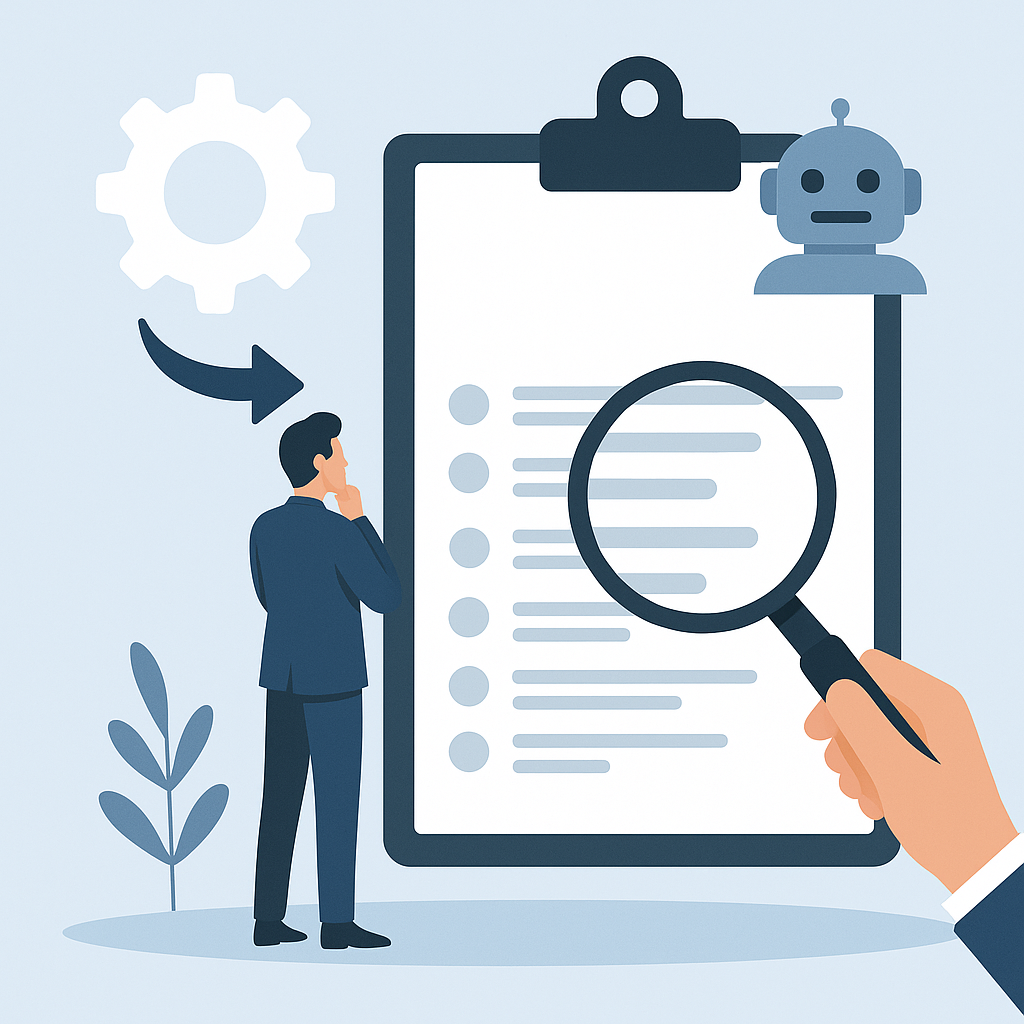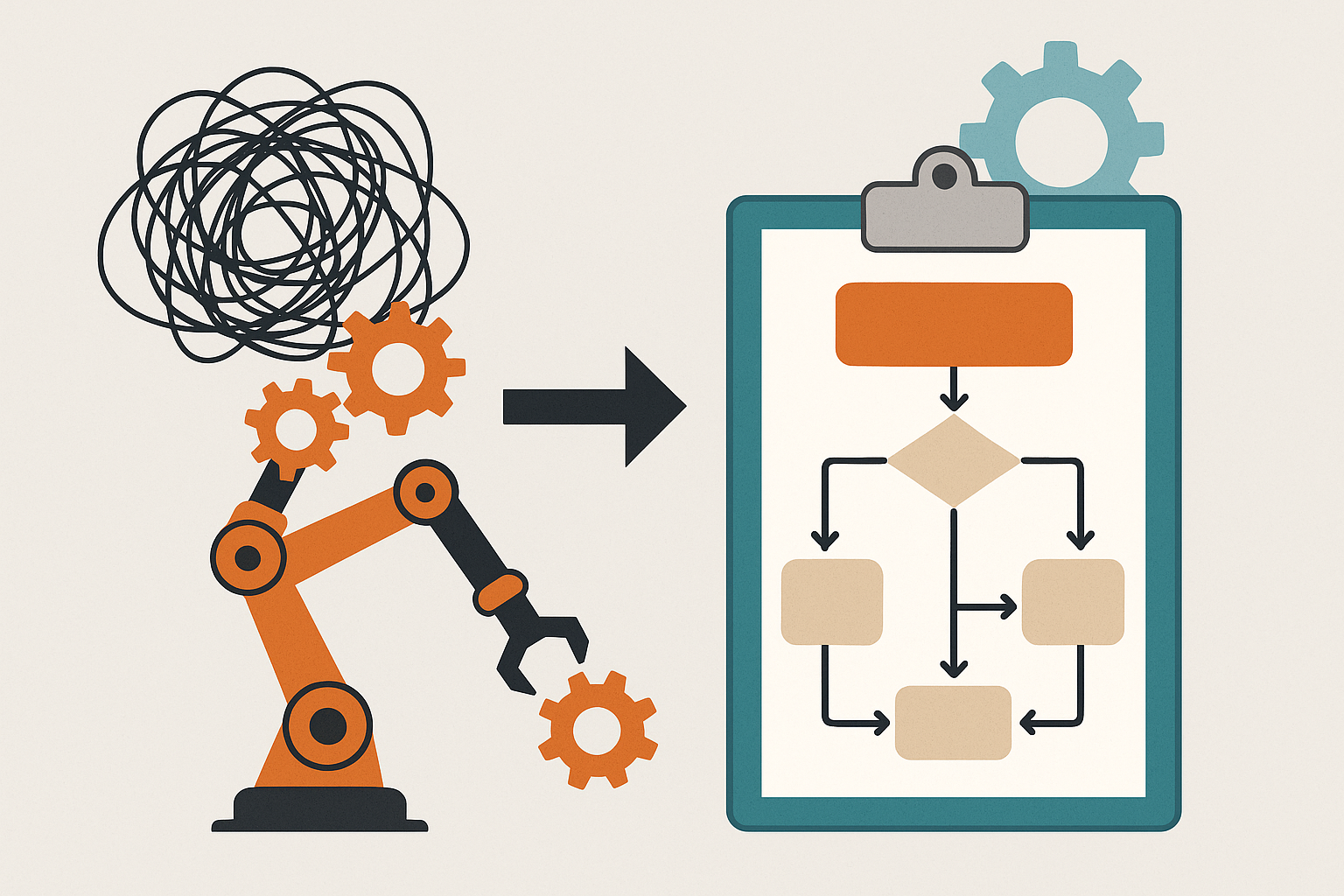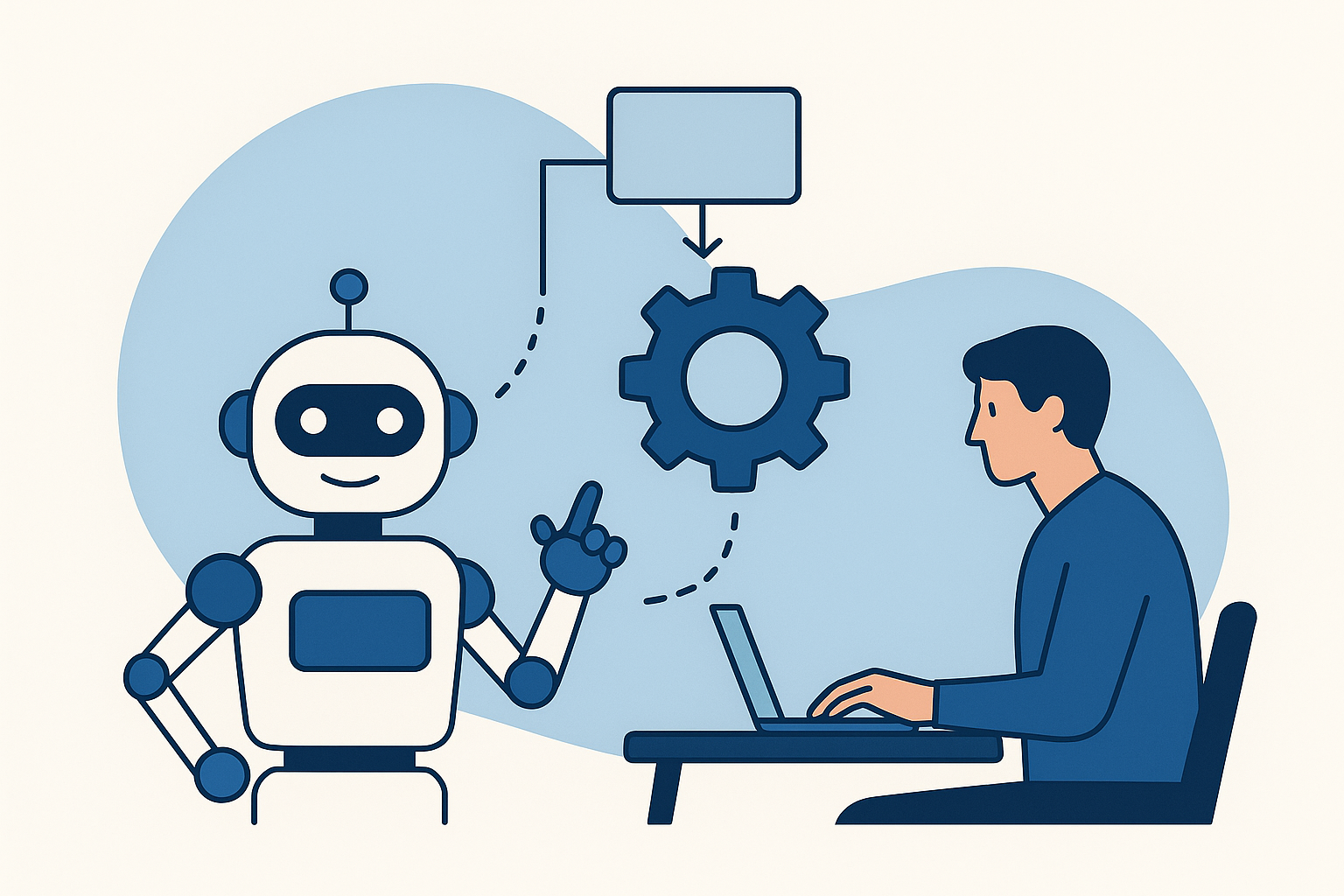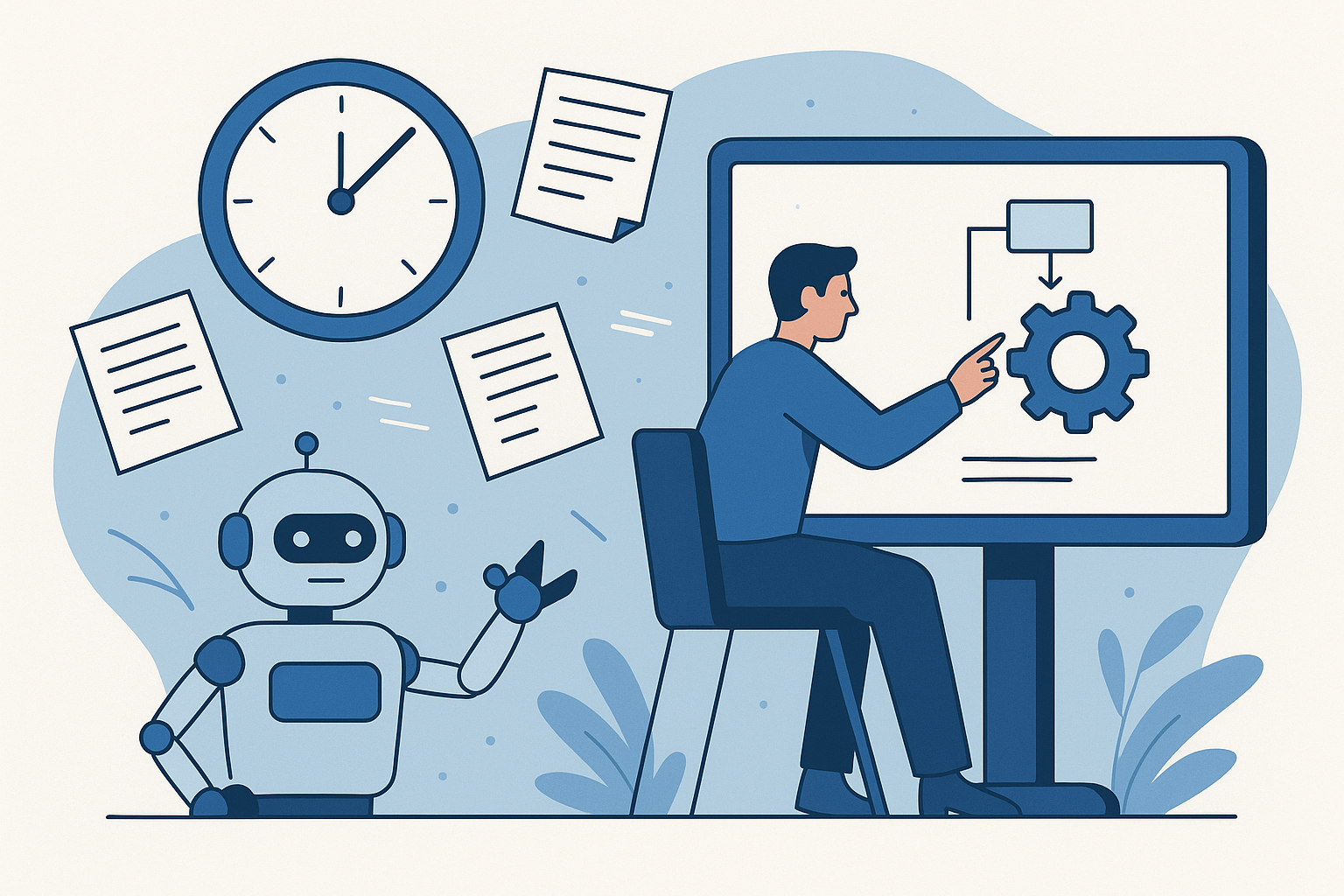
Automate the Right Thing — or Lose Everything
In the world of digital transformation, we talk a lot about how to automate and which tools to use — but far too little about what to automate.
Here’s a hard truth:
If you choose the wrong process, everything else fails — no matter how powerful your automation or AI tools are.
Process selection isn’t optional — it’s foundational.
Imagine investing in a new automation platform. You gather your team, build the solution, and launch… Only to realize months later that the process you automated was too complex, too unstructured, or simply irrelevant.
The result?
- Wasted budget
- Lost time
- Demotivated teams
- Zero ROI
Our Process Selection Matrix: Built to Prevent Failure
We’ve developed a robust Process Selection Methodology — a matrix that evaluates each candidate process based on:
For Automation:
- Resource consumption
- Standardization and repeatability
- Cross-functional involvement
- Clarity and formalization
- Simplicity of decision points
For AI Agents:
- Decision-making complexity
- Data volume and structure
- Expected benefit vs. cost
- Technical feasibility
Every process is scored, analyzed, and ranked — leading to data-driven selection of processes with the highest success potential.
Skipping this step? That’s like building a skyscraper on soft ground. It might look good at first — but it won’t last.
Final takeaway:
If you’re serious about automation and AI, your first investment should be in choosing the right process.
Everything else — tech, tools, integration — comes after that.
And that’s where our Process Selection Matrix delivers.
Let’s start smart. Let’s automate the right way — by automating the right thing.

Automating Chaos? Why Process Improvement Must Come First
Before you think about automating your business processes or implementing artificial intelligence, there’s one critical question you need to ask:
Are your processes even worth automating in their current form?
Automating chaos is still chaos — only faster. If a process is inefficient, redundant, or broken, automating it doesn’t fix the problem — it amplifies it.
It’s like paving a road full of potholes — no matter how smooth the ride seems at first, you’ll still end up damaging the car.
Step One: Analyze, Improve, THEN Automate
- Map the process – Understand every step, bottleneck, and decision point.
- Identify waste – Look for delays, rework, over-processing, or unnecessary approvals.
- Redesign for efficiency – Apply Lean, Six Sigma, or BPM tools to simplify and optimize.
- Standardize – Document and control the new improved process.
- Then automate – Use digital tools, AI, or RPA to enhance speed, accuracy, and scale.
Why this order matters:
- You automate value, not mess – Automation makes good processes great. But it makes bad ones worse — silently.
- Better ROI – Improved processes need less rework and fewer exceptions. That makes automation cheaper, faster, and more reliable.
- AI learns from patterns – AI thrives on structure. If your process is unclear, it won’t deliver accurate results.
Real-life takeaway: If you’re asking: "Should we automate this now or improve it first?" The answer is simple: Improve first. Always.
Final Thought
Don’t digitize confusion. Design clarity — and then enhance it with automation.
Ready to improve before you automate?
Let’s work together to streamline your operations and then take them to the next level.

AI Agents and AI Builder: What They Can Do for Your Business
AI is no longer a futuristic concept—it’s a powerful tool already helping businesses work smarter, faster, and more efficiently. In this blog, we’ll explain two practical ways companies can use artificial intelligence without needing a team of developers: AI Agents and Microsoft’s AI Builder.
What Are AI Agents?
AI Agents are smart, goal-oriented assistants that can perform tasks, make decisions, and interact with users or systems—just like a human employee might. But unlike chatbots that only give predefined answers, AI agents can reason, learn from context, and act autonomously.
Examples of AI Agents in business:
- Answering customer questions based on your documentation or knowledge base
- Guiding new employees through onboarding steps
- Monitoring incoming requests and routing them to the right department
- Summarizing meeting notes or emails into action points
What Is AI Builder?
AI Builder is a tool from Microsoft that allows you to add intelligence to your business apps and processes—without writing any code. It’s designed for business users who want to automate and improve decisions using data and AI models.
With AI Builder, you can:
- Extract data from documents automatically (like invoices, receipts, forms)
- Recognize text from images using OCR
- Predict outcomes (e.g., which leads are likely to convert)
- Analyze customer sentiment in feedback or reviews
- Detect objects in images or video streams
How Can This Help My Business?
- Save time by automating repetitive tasks
- Improve accuracy by reducing human error
- Offer better customer service 24/7
- Make faster and smarter decisions based on data
- Free up your team to focus on strategic work
Real-Life Use Case
Imagine a customer submits a complaint through an online form. An AI Agent reads the message, identifies the topic, checks past history with the customer, and routes it to the appropriate manager. Meanwhile, AI Builder extracts key data from the form and updates your CRM or SharePoint automatically.
Conclusion
AI Agents and AI Builder are not just tech buzzwords—they’re real tools you can start using today. They help small and medium businesses compete like big ones—by being faster, smarter, and more responsive.

Why Now Is the Right Time to Automate Your Business
Every company faces the same issues: tons of emails, Excel sheets that nobody updates on time, delayed approvals, and people constantly asking: “Where did it get stuck?”
Individually, these may not seem like big problems. But together, they slow down the business, waste time, and increase the risk of errors. The solution? Business process automation.
What Does “Process Automation” Mean?
It means that instead of people manually sending emails, updating spreadsheets, or copying data from one system to another – the system does it automatically.
Imagine this:
- A leave request is automatically sent to the supervisor and HR
- Customer survey data is automatically saved to your database
- Clients receive automatic email notifications when a task is completed
- SharePoint changes trigger Excel updates and email alerts
What Does It Look Like in Practice?
Let’s say you have a company with 10–50 employees. You’re already using Outlook, Excel, and maybe SharePoint.
With Microsoft Power Automate, you can:
- Automate onboarding – create IT tasks, notify HR, set up email
- Track requests and statuses in real time
- Connect everything to Power BI for KPI dashboards
What Do You Gain?
- Time savings
- Fewer errors and forgotten tasks
- Faster decision-making
- Professional image
- Fewer emails, more focus
Conclusion
Automation is no longer a luxury. It’s simple, affordable, and powerful. If your business still runs on emails, Excel, and confusion, it’s time to move forward.

We Asked Gemini: What Is Process Automation?
Process automation is the use of technology, primarily software, to automate repetitive tasks and business processes. This involves designing and implementing workflows that minimize or eliminate human intervention, leading to increased efficiency, consistency, and accuracy in operations. Essentially, it streamlines business functions by leveraging technology to execute tasks that would otherwise be performed manually.
Automating Repetitive Tasks:
Process automation focuses on identifying and automating routine, rule-based tasks that are often time-consuming and prone to human error.
Improving Efficiency and Consistency:
By automating these tasks, organizations can reduce the time and effort required to complete processes, leading to faster turnaround times and increased consistency in outcomes.
Reducing Human Error:
Automation minimizes the potential for human error, ensuring that processes are executed accurately and reliably.
Freeing Up Human Resources:
Automation frees up employees from tedious tasks, allowing them to focus on more strategic and value-added activities.
Examples of Process Automation:
Examples include automating invoice processing, customer onboarding, data entry, report generation, and many other business functions.
Key Technologies:
Process automation often utilizes technologies such as robotic process automation (RPA), workflow automation, and artificial intelligence (AI) to achieve its goals.
Ready to start? Visit our homepage to learn more about intelligent automation solutions tailored for your business.

How Automation Saves Time and Reduces Errors
In today's fast-paced business environment, time is one of the most valuable resources. Manual, repetitive tasks not only slow down your processes but also increase the likelihood of human error.
Implementing automated workflows using tools such as Microsoft Power Automate can significantly reduce the time spent on approvals, reporting, and document management. This not only improves efficiency but also increases transparency and reliability.
Our clients report saving dozens of hours each month after digitizing just one or two key workflows. It's a small change that creates a big impact.
Ready to start? Visit our homepage to learn more about intelligent automation solutions tailored for your business.